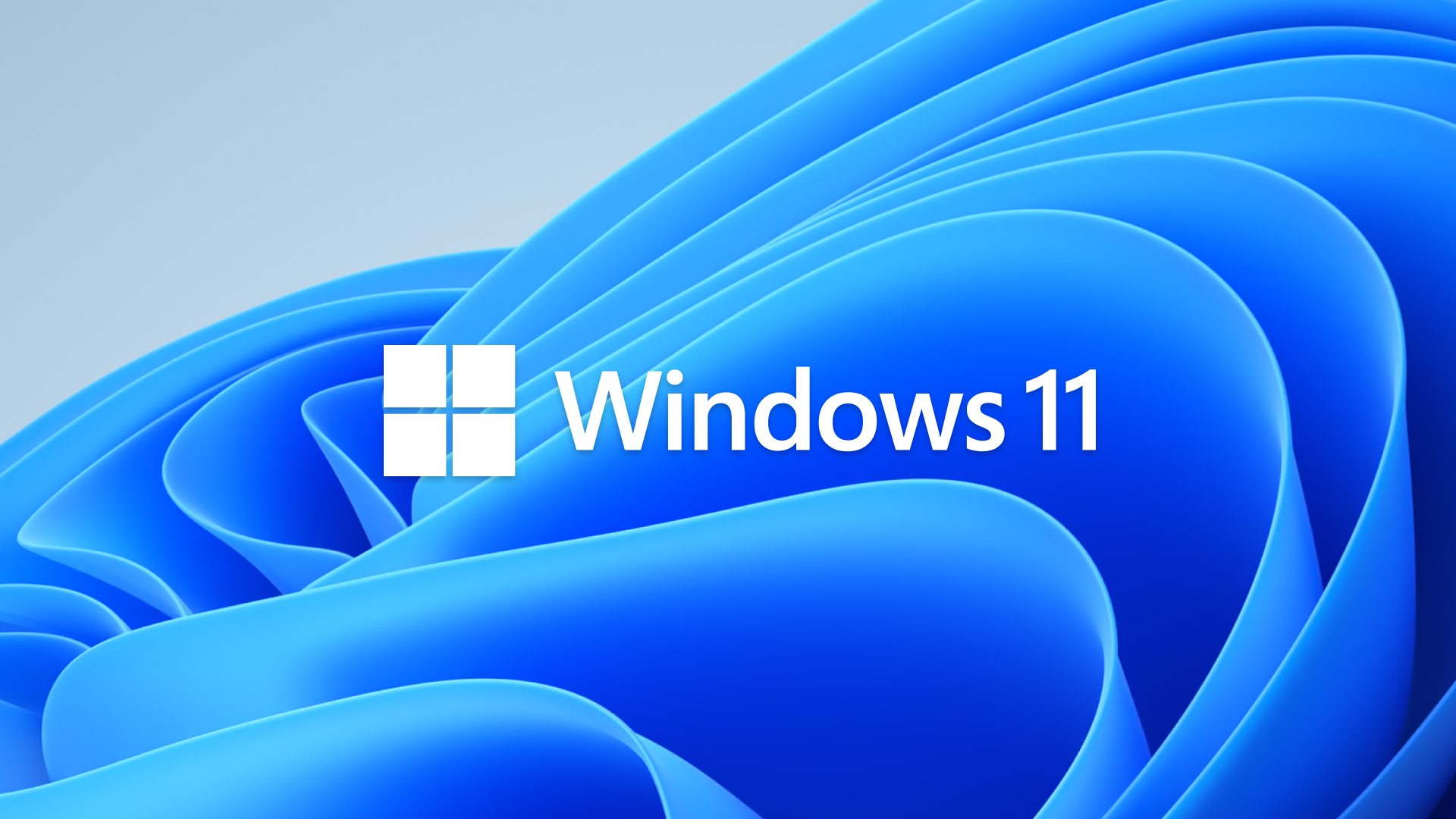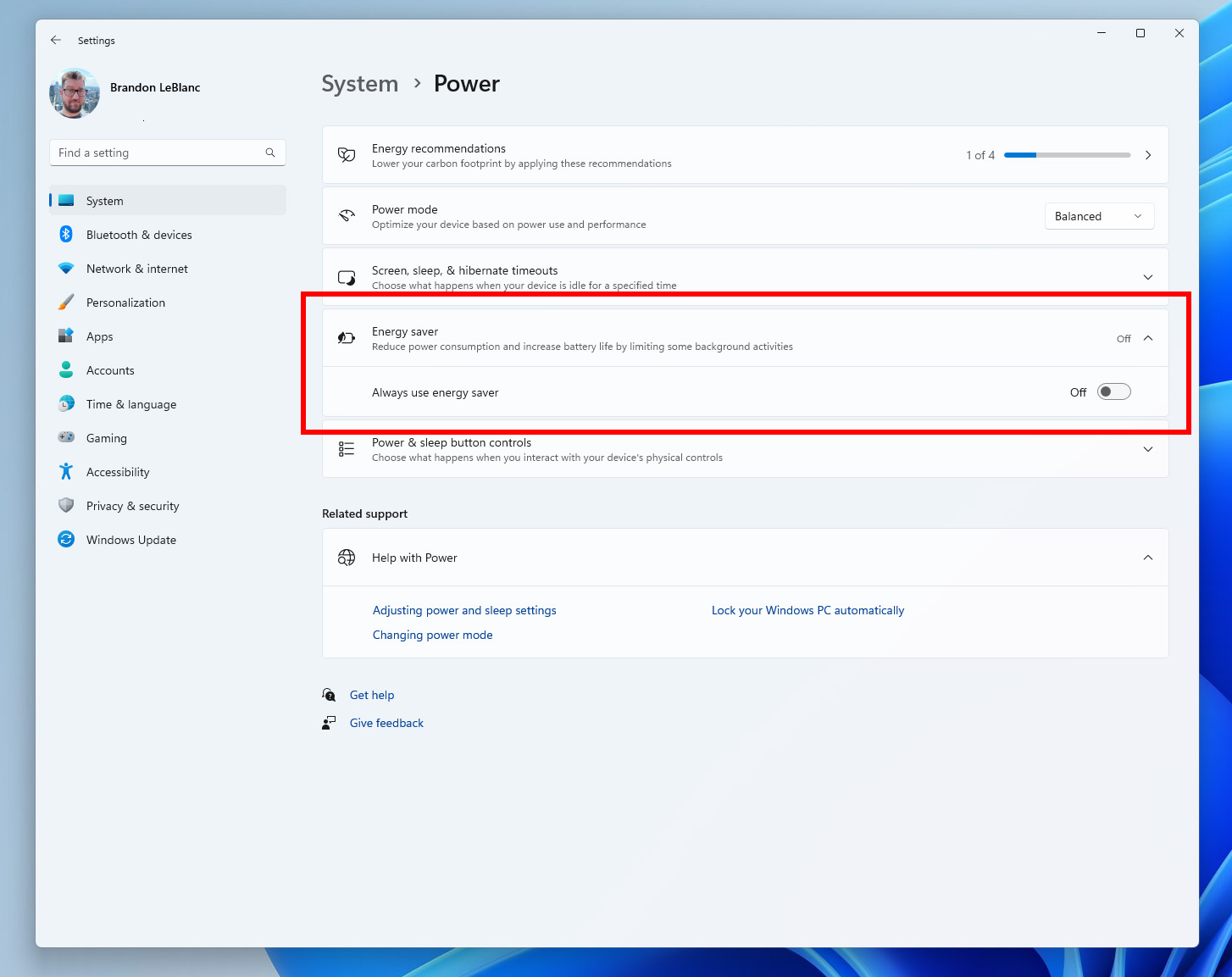Windows 11's new energy saver mode in Insider builds limits background activities to increase battery life
Windows 11's power-saving techniques are getting smarter

Microsoft is actively testing a new energy saver for Windows 11 that aims to improve laptop battery life or desktop power consumption by disabling power-intensive background applications. The new feature was detailed in a Windows Insider blog post and is currently accessible in Windows 11's latest Insider Canary build 26002.
"It is an easy way to extend battery life and reduce energy use by trading off some system performance," the blog post, by Windows Insider head Amanda Langowski and senior program manager Brandon LeBlanc, reads. It's early days, and we don't know what kind of performance impact this feature could have in a final release (nor how much it could improve battery life).
Clearly, there's a hardware tradeoff here. But a screenshot from Microsoft shows a label that reads "Reduce power consumption and increase battery life by limiting some background activities" suggest that work is being done on the software side, too.
That technique is very similar to the way modern smartphone operating systems extend battery life in mobile devices. In modern Android and iOS devices, background apps are constantly kept in check to ensure that processes are not unnecessarily draining battery life.
Windows 11's new energy saver could potentially provide a serious improvement in battery life performance for millions of laptops running Microsoft's latest operating system. Uncontrolled background applications are one of the primary causes of accelerated battery drain, since these applications are practically invisible to the user. They can come in any form, including Windows updates, browser tabs, uninterrupted background video playback, backup programs, and more.
If you have access to Canary build 26002, you can access Microsoft's new software-focused energy saver by going to the Power section System submenu in the Settings app. There you'll be able to activate the energy saver and be able to toggle it to always run no matter what. Alternatively, you can turn it on and off in the system tray.
The preview version of the new energy saver works on both laptops and desktops. If that translates into a release, desktops could also benefit from this feature for users who need to cut back on energy costs, or simply want to be eco-conscious. A release date has not been announced, but due to the fact that it is already being tested by Windows Insiders, we wouldn't be surprised if it releases widely sometime in a 2024 Windows update.
Get Tom's Hardware's best news and in-depth reviews, straight to your inbox.

Aaron Klotz is a contributing writer for Tom’s Hardware, covering news related to computer hardware such as CPUs, and graphics cards.
-
kyzarvs They can come in any form, including Windows updates, browser tabs, uninterrupted background video playback, backup programs, and more.Reply
The irony of reading that whilst the screen is crowded by 3 auto-playing ad videos... -
Amdlova I'am downgrading the 13500T for the 13100T to save some power. That's new function will become handy. Trying to shave all power and heat possible. Energy in my country become high expensively in summer.Reply -
1_rick "In modern Android and iOS devices, background apps are constantly kept in check to ensure that processes are not unnecessarily draining battery life."Reply
Great. Now we get to deal with the downsides of that, too. Nothing like having your fitness tracker get shut off after 30 seconds of running in the background, which I had a phone do. Samsung phones are well known for aggressively killing apps, too, and they keep changing the UI for the things you want to disable the power saving on. -
BillyBuerger Reply
Do you see any real difference in power between those two CPUs? While the T series CPUs sound like a good thing, I thought they really didn't change anything on the low/idle power usage. Just means they're limited on the max power they can use. Which can end up using more power to do the same task if it takes 2x as long as a more powerful CPU which can get to idle sooner.Amdlova said:I'am downgrading the 13500T for the 13100T to save some power. That's new function will become handy. Trying to shave all power and heat possible. Energy in my country become high expensively in summer. -
TJ Hooker Reply
I really doubt you'd ever notice a difference in your electricity bills between those two processors, even with very high rates. Plus, if you really want a lower power limit why not just set one in the BIOS rather than getting a new (weaker) CPU?Amdlova said:I'am downgrading the 13500T for the 13100T to save some power. That's new function will become handy. Trying to shave all power and heat possible. Energy in my country become high expensively in summer.
Edit: Or even just set the turbo limits to respect Intel's recommendations, if you happen to have a board that defaults to unlimited turbo power and/or duration (as some do in order to make their product appear more performant). -
DavidC1 Reply
If you really wanted to save power, you'd get a laptop.Amdlova said:I'am downgrading the 13500T for the 13100T to save some power. That's new function will become handy. Trying to shave all power and heat possible. Energy in my country become high expensively in summer.
Also another thing is just use your computer less.
Energy saving and using more power frugal devices kinda work counter to each other. Often, you don't end up saving much if at all because your mind kicks in.
The New York Times Square ball used incandescents and were on only 1 night out of the year. They switched to LEDs which are maybe 7-8x less energy but now have it on for 365 days.
365/7 = 52x more energy
So is your goal to save real energy or a token gesture like 99% of people? Try living on less than 1,000 watt a day. Once you reach that goal you'll really know how to save energy. -
kyzarvs Reply
1000w isn't a unit of capacity.DavidC1 said:If you really wanted to save power, you'd get a laptop.
Also another thing is just use your computer less.
Energy saving and using more power frugal devices kinda work counter to each other. Often, you don't end up saving much if at all because your mind kicks in.
The New York Times Square ball used incandescents and were on only 1 night out of the year. They switched to LEDs which are maybe 7-8x less energy but now have it on for 365 days.
365/7 = 52x more energy
So is your goal to save real energy or a token gesture like 99% of people? Try living on less than 1,000 watt a day. Once you reach that goal you'll really know how to save energy.
Do you mean 1 kw/hr? If so, then I'm not sure that's possible. I would say my fridge would consume a significant portion of that for example, then my shower and then I'm left sitting in the dark. IF you mean draw no more than 1000w at a time, well that is much easier if you are at 240v than 110. -
ezst036 Replykyzarvs said:They can come in any form, including Windows updates, browser tabs, uninterrupted background video playback, backup programs, and more.
The irony of reading that whilst the screen is crowded by 3 auto-playing ad videos...
Microsoft has competing interests here.
Ads are increasingly video-based. Yet, through Co-Pilot they are making the Windows OS more and more an adware OS.
If Microsoft wants to save power, how about this? Just stop transforming the OS into foundational adware?
But they need the money. You see who wins and it isn't the energy savings. -
TJ Hooker Reply
Why would 240v make that easier?kyzarvs said:IF you mean draw no more than 1000w at a time, well that is much easier if you are at 240v than 110.
Edit: I guess some of your appliances/devices might get a modest efficiency boost from 240v, but I can't imagine that being the make or break factor. -
kaalus Reply
I don't understand why people are so confused about power and energy units. Here, one baffled person is trying to correct another.kyzarvs said:1000w isn't a unit of capacity.
Do you mean 1 kw/hr?
1kw/hr? First of all, that would be 1kW/h. But that unit does not make sense - what was really meant was 1kWh. Something completely different, like 1 mile is different from 1 mph.
